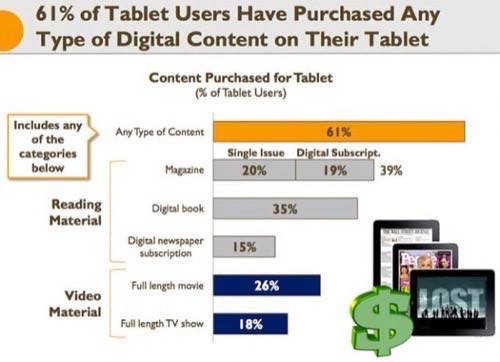
Publishers looking to tablets for salvation may have been disheartened last week. Huffington, the iPad-based magazine from The Huffington Post, axed the dollar-per-issue price tag adorning its digital newsstand, offering each issue to readers for free. But publishers shouldn’t toss their pay-wall plan just yet. People will pay.
On one hand, most readers familiar with the Huffington Post brand never dreamed they’d have to pay for its content through any means other than ad impressions.
Yet Huffington, the digital magazine, is different from HuffingtonPost.com. Its stories are longer, more thoroughly reported and laid out in a fashion reminiscent of Newsweek or Time. It feels somewhat like tablet offerings produced by the likes of Conde Nast or National Geographic, but with an even less print-bound approach than many competitors.
So why did Huffington peel back its price tag? The app was only live for five weeks before the shift was made, so it’s not like the company had a trove of historical data to rely on. Instead, it feels like it was more of a philosophical choice. Charging for a digital magazine felt “inconsistent with the Huffington Post itself,” a company spokesman told the Capital. Instead, HuffPost will rely on advertising, just as it does on the Web.
Can Publishers Make Money From Tablets?
But for publishers hoping to monetize tablet-bound readers, hope is not lost. The research shows that people who own tablets are pretty immersed in them and most have no problem paying for content. Sixty-one percent of tablet owners have purchased digital content, according to a recent survey from the Online Publishers Association.

Evidently, Huffington didn’t see overwhelming evidence of that. But the advertising-only model isn’t necessarily a doomed one.
The same survey from the association points out that not only are people glued to their tablets, many find tablet-based advertising to be more effective. Thirty-eight percent of tablet owners say they’ve purchased or researched a product after seeing an ad. Among those that say they’ve purchased content, ad conversion shoots up to 54%.
Recent research suggests a hybrid of advertising and paid content might work, but as HuffPost demonstrates, it really depends on the publisher and who their audience is. Perhaps there’s a future in Netflix-style subscription model for magazines, an idea on which the folks behind Next Issue, a service that offers exactly that, are banking. Whatever the model for publishers turns out to be, it’s still very much in the process of emerging.










